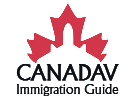As the Covid-19 pandemic has deepened labor market problems, and as it desires to grow its economy, Canadians plan to receive more than 1.2 million immigrants in the coming years.
Canadian Immigration Minister Marco Mendesino revealed his plan to bring in immigrants to grow the economy. In the next year alone, Canadians are ready to provide permanent residency to 401,000 foreigners, and in 2022 for another 411,000, and in 2023 for another 421,000.
The Covid-19 pandemic has hit the labor market hard, and Canada has put in place a plan to attract workers to key sectors such as health. “Before the pandemic, our government’s desire to get the economy moving with the help of immigrants was an ambitious plan.” Now, Mendicino said, “it’s a vital plan.” If the government succeeds in attracting the number of foreigners it set out to do, it would be the largest flow of immigrants into Canada since 1911. Many of those who would be offered permanent residence are already in Canada. Nearly 60,000 refugees and people with some form of international protection will also receive documents. Another 5,500 people will be admitted on humanitarian grounds.
Canada has long been a role model in the immigration sector, as refugee families and skilled workers have been able to bring their families. “Whether they are caring for the vulnerable in society or putting food on the table, the newcomers have played an important role in our response to the COVID-19 crisis,” Mendesino said. And according to the latest census, more than 7 million people born abroad have arrived in Canada through the immigration process. According to an analysis based on Google searches by Remitly, a financial services company, Canada ranks first, followed by Japan and Spain in the top countries that immigrants from all over the world want to move to in order to start a new life.
Robert Falconer, a researcher in refugee and immigration policy at the University of Calgary’s School of Public Policy, wrote on Twitter that if the government achieves its goals, the next three years will be “the highest years since 1911”.
Ottawa said it aims to receive 232,500 new economic immigrants in 2021, in addition to 103,500 family members already in Canada, and 59,500 refugees and others protected. Another 5,500 people will be admitted on humanitarian grounds.
The Canadian immigration system has always been supported as a model, as it has historically brought in skilled workers as well as refugees and people wishing to reunite family members who are already in the country.
The country closed its borders to most immigrants in March due to COVID-19. By August, it had identified 128,425 new arrivals, Reuters reported – less than half of the 341,000 target set for 2020.
The Covid-19 pandemic has also exacerbated stark inequalities and long-standing problems with Canada’s immigration system.
Canadian Immigration Minister Ahmed Hussain told AFP that Canada plans to attract one million immigrants by the end of 2021 to meet the need for employment in the economy.
Exactly one year ago, the government set a limit of 300,000 annual immigrants, but that number is now considered insufficient.
Ahmed Hussein told a press conference in Toronto on Wednesday that Canadian authorities expect to provide permanent residency for 310,000 foreigners next year, followed by 330,000 in 2019 and 340,000 in 2020.
Most of these arrivals will come out of economic needs, but also through family reunification and the continuation of the refugee reception policy. “This will help us meet the challenges of the coming years, such as a slowdown in employment and a labor force shortage due to an aging population,” said the Canadian minister, who is himself of Somali origin and Canadian refugee.
According to Hussein, if the ratio between active and retired people in Canada in 1971 was 6.6: 1, then in 2012 it reached 4.2: 1, which puts you at risk of falling to 2: 1 by 2036 if the immigration plan is not implemented.
Given that a large proportion of permanent residents will be able to obtain Canadian citizenship in the coming years, the proportion of Canadians born abroad will continue to grow.
According to the latest census published last week, 7.5 million Canadians, or 21.9% of the population, were born abroad. The percentage is close to the maximum, 22.3%, recorded in 1921.

Canada Immigration Guide
Your best chance of living in Canada

